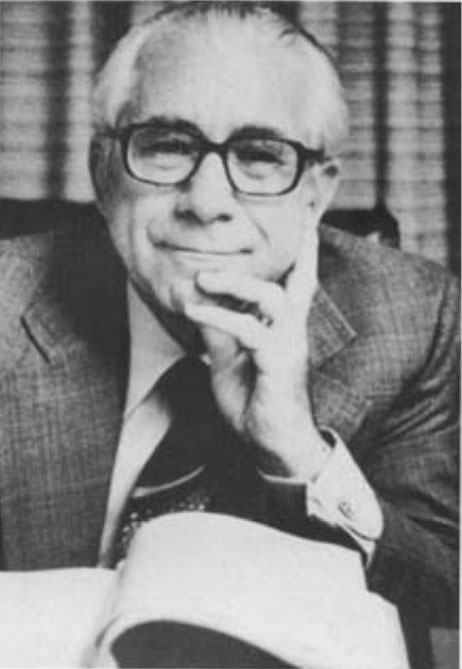President's page: On the occasion of the 25th year of the Journal of The American College of Cardiology
... that by precept, lecture and every other mode of instruction . I will impart a knowledge of the art .. .
from a translation of the Hippocratic Oath
interpreted as an obligation to publish
...
 Simon Dack, MD
Simon Dack, MD
|
While the large number of medical journals available for physician scrutiny has been likened to " publication madness" spawned by the availability of advertising revenues, there is a need, on occasion, for a new journal. This was recognized by Dr. Simon Dack 25 years ago when he became the Editor-in-Chief of the official journal of the American College of Cardiology. The journal was dedicated to "carrying out two important functions of the College. namely, postgraduate education and providing a forum for the discussion and dissemination of knowledge and ideas in cardiology."
In the 1958 inaugural issue of the official journal of the American College of Cardiology, Dr. Dack stated, "We believe that there is not only room, but a distinct need for a new journal oriented at the clinic al level. Such a journal would serve to crystalize and correl ate the various advances in basic and clinical research and apply them to the diagnosis and treatment of cardiovascular disease ... We will derive our papers and editorial material from the research worker as well as the experienced clinician. ... We believe that such a policy will serve to stimulate as well as to educate the clinician."
Medical journals serve a number of functions. They provide a chronicle of the times and a mechanism for the exchange of ideas between investigators, they stimulate clinical observations and, for many, they are a primary instrument of continuing education. The gap between medical research and clinical application is most readily spanned by the journal format. Indeed, either without the other is likely to lose relevance. Certainly the advances in cardiology over the past 25 years, many of which are discussed in this issue of the Journal of the American College of Cardiology, were expedited by the exchange of ideas made possible by the journal format.
It cannot be predic ted at a journal's inception whether it is likely to meet a need or to survive. Goals and objectives for the journal can be set, but the proof is in consumer satisfaction. After 25 years, based on all criteria for usefulness as an educational instrument and a promulgator of clinical cardiologic progress, the official journal of the American College of Cardiology is recognized as a major "impact" journal. It is almost certain that the editorial policies of the journal have contributed significantly to its success. Like clinical investigation which demands the gift of observation and the ability to visualize information required to solve a clinical problem, an editor of a successful clinical" impact" journal must have similar gifts. During the past 25 years, Simon Dack has demonstrated his gift as an observer of clinically relevant questions; and. through his insistence that articles be of interest to and understandable by the clinician . he has been a supporter of the clinical investigator and the practicing cardiologist alike. Dr. Dack also stated in his editorial for the inaugural issue of 25 years ago that, "We wish to encourage contributions from practicing and independent physicians as well as from research workers and those associated with teaching centers." Can it be that Dr. Dack is a true disciple of Hippocrates in considering the need for a teaching journal and the obligation of all physicians regardless of their practice setting to contribute their observations and thoughts?
As the American College of Cardiology launches the 25th year of its official journal, it does so with a change in name only. Thanks to the dedication and commitment of its Editor-in-Chief and Editorial Board, there is no change in editorial policy. The Journal of the American College of Cardiology will continue to serve College members and all other physicians concerned with the diagnosis, management and prevention of cardiovascular disease. This issue of the Journal of the American College of Cardiology is, therefore, dedicated to Dr. Simon Dack, its Editor-in-Chief, who has stood by his principles over the past 25 years. When asked recently what his criteria were for an article to be published in the Journal he reiterated his basic tenets: clinical relevance and clarity. And who determines that an article meets the necessary criteria for clinical relevance and clarity? Dr. Dack does.
This article was originally published in the January, 1983 edition of JACC.
Knoebel SB. President's page: On the occasion of the 25th year of the Journal of The American College of Cardiology. J Am Coll Cardiol. 1983;1(1):1-2. doi:10.1016/S0735-1097(83)80002-3.
Keywords: ACC History
< Back to Listings
